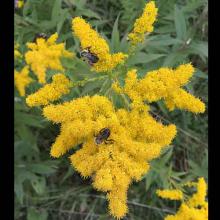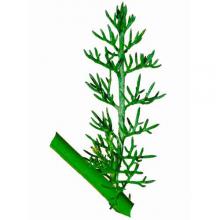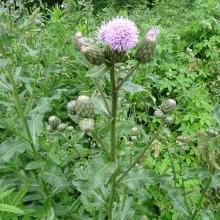Echinacea angustifolia
Common name:
Blacksamson echinacea
Genus:
Echinacea
Family:
Asteraceae
Order:
Asterales
Echinacea purpurea
Common name:
Purple coneflower
Genus:
Echinacea
Family:
Asteraceae
Order:
Asterales
Solidago canadensis
Common name:
Canada goldenrod
Genus:
Solidago
Family:
Asteraceae
Order:
Asterales
Matricaria chamomilla
Common name:
Chamomille
Genus:
Matricaria
Family:
Asteraceae
Order:
Asterales
Cirsium arvense
Common name:
Canadian thistle
Genus:
Cirsium
Family:
Asteraceae
Order:
Asterales
Echinacea angustifolia
Common name:
Blacksamson echinacea
Genus:
Echinacea
Family:
Asteraceae
Order:
Asterales
Echinacea purpurea
Common name:
Purple coneflower
Genus:
Echinacea
Family:
Asteraceae
Order:
Asterales
Solidago canadensis
Common name:
Canada goldenrod
Genus:
Solidago
Family:
Asteraceae
Order:
Asterales
Matricaria chamomilla
Common name:
Chamomille
Genus:
Matricaria
Family:
Asteraceae
Order:
Asterales
Cirsium arvense
Common name:
Canadian thistle
Genus:
Cirsium
Family:
Asteraceae
Order:
Asterales
Echinacea angustifolia
Common name:
Blacksamson echinacea
Genus:
Echinacea
Family:
Asteraceae
Order:
Asterales
Echinacea purpurea
Common name:
Purple coneflower
Genus:
Echinacea
Family:
Asteraceae
Order:
Asterales
Solidago canadensis
Common name:
Canada goldenrod
Genus:
Solidago
Family:
Asteraceae
Order:
Asterales
Matricaria chamomilla
Common name:
Chamomille
Genus:
Matricaria
Family:
Asteraceae
Order:
Asterales
Cirsium arvense
Common name:
Canadian thistle
Genus:
Cirsium
Family:
Asteraceae
Order:
Asterales
Family (Plantae): Asteraceae
Asteraceae or Compositae (commonly referred to as the aster, daisy, composite, or sunflower family), is a very large and widespread family of flowering plants (Angiospermae).
The family includes over 32,000 currently accepted species, in over 1,900 genera (list) in 13 subfamilies. In terms of numbers of species, the Asteraceae are rivaled only by the Orchidaceae. Which is the larger family is unclear, because of the uncertainty about how many extant species each family includes.
Nearly all Asteraceae bear their flowers in dense heads (capitula or pseudanthia) surrounded by involucral bracts. When viewed from a distance, each capitulum may appear to be a single flower. Enlarged outer (peripheral) flowers in the capitula may resemble petals, and the involucral bracts may look like a calyx. The name Asteraceae comes from the type genus Aster, from the Ancient Greek ἀστήρ, meaning star, and refers to the star-like form of the inflorescence. The alternative name Compositae is still valid under the International Code of Nomenclature for algae, fungi, and plants.) It refers to the "composite" nature of the capitula, which consist of a few or many individual flowers.
Most members of Asteraceae are annual or perennial herbs, but a significant number are also shrubs, vines, or trees. The family has a cosmopolitan distribution, with species ranging from subpolar to tropical regions, colonizing a wide variety of habitats. The largest proportion of the species occur in the arid and semiarid regions of subtropical and lower temperate latitudes. The Asteraceae may represent as much as 10% of autochthonous flora in many regions of the world.
Asteraceae is an economically important family, providing products such as cooking oils, leaf vegetables like lettuce, sunflower seeds, artichokes, sweetening agents, coffee substitutes and herbal teas. Several genera are of horticultural importance, including pot marigold (Calendula officinalis), Echinacea (coneflowers), various daisies, fleabane, chrysanthemums, dahlias, zinnias, and heleniums. Asteraceae are important in herbal medicine, including Grindelia, yarrow, and many others.
On the other hand, many Asteraceae are considered weeds in various circumstances. Of these, many are invasive species in particular regions, often having been introduced by human agency. Examples include various tumbleweeds, Bidens, ragweeds, thistles, and dandelion. Dandelion was introduced into North America by European settlers who used the young leaves as a salad green.
The study of this family is known as synantherology.
Reference: Wikipedia





